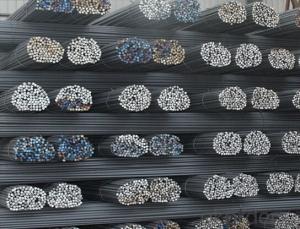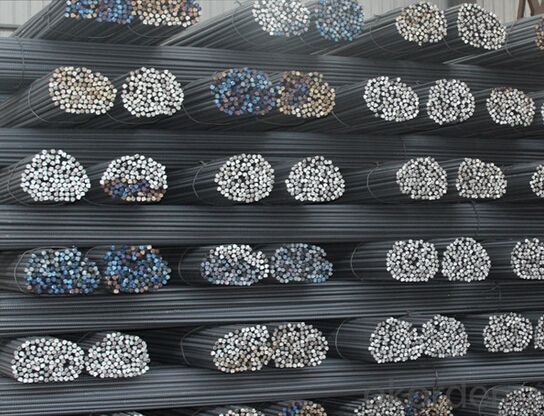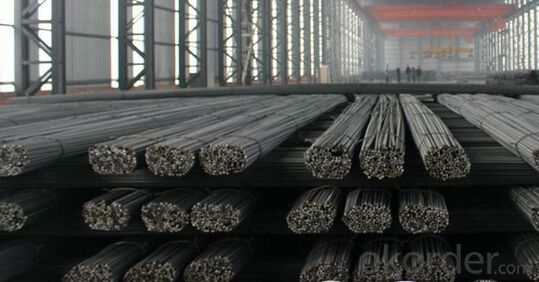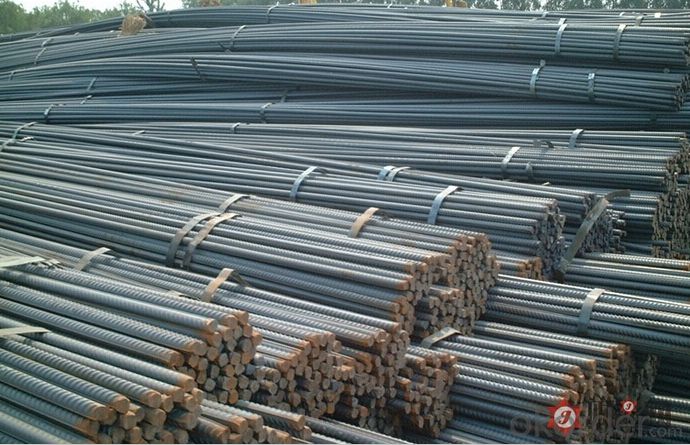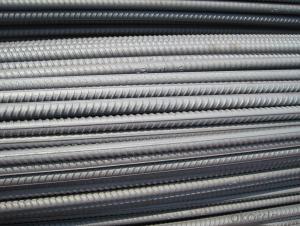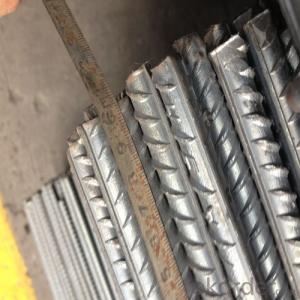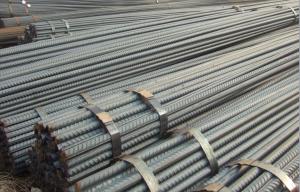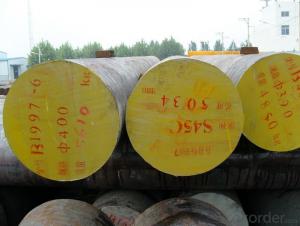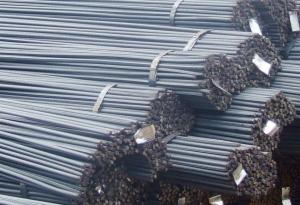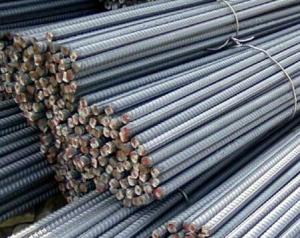ASTM A706, 460B,500B,GR40,GR50 Deformed Steel Bar
- Loading Port:
- Tianjin
- Payment Terms:
- TT OR LC
- Min Order Qty:
- 100 m.t.
- Supply Capability:
- 10000 m.t./month
OKorder Service Pledge
Quality Product, Order Online Tracking, Timely Delivery
OKorder Financial Service
Credit Rating, Credit Services, Credit Purchasing
You Might Also Like
Specification
Standard:
AISI,ASTM,JIS,GB,BS,DIN,API,EN
Technique:
Hot Rolled,Cold Rolled,Cold Drawn,ERW,Forged,Saw,Extruded,EFW,Spring
Shape:
U Channel,Square,C Channel,Hexagonal,Round,Rectangular,Oval,LTZ
Surface Treatment:
Galvanized,Coated,Copper Coated,Color Coated,Oiled,Dry,Chromed Passivation,Polished,Bright,Black,PVDF Coated
Steel Grade:
Q195,Q215,Q235,Q215B,Q235B,RHB335,HRB400,200 Series,300 Series,400 Series,600 Series,SS400-SS490,10#,20#,A53(A,B)
Certification:
ISO,SGS,BV,IBR,RoHS,CE,API,BSI,UL
Thickness:
6-34mm
Width:
6-34mm
Length:
12m
Outer Diameter:
6-34mm
Net Weight:
10kg
Packaging:
seaworkthy packaging
ASTM A706, 460B,500B,GR40,GR50 Deformed Steel Bar
Details of the ASTM A706, 460B,500B,GR40,GR50 Deformed Steel Bar
| Standard & Grade: | GB1499-98 : HRB335,HRB400,HRB500 |
| BS4449-1997 : GR460,GR500 | |
| CAN/CSA-G30.18-M92 : 400W | |
| ASTM A615 : Gr.40, Gr.60 | |
| Diameter: | 6mm;8mm;10mm;12mm;14mm;16mm;18mm;20mm;22mm;25mm;28mm;30mm;32mm;35mm;40mm |
| Length: | 6m,9m,12m |
| Packing: | Bundle packing |
| Origin: | China |
| Application: | Construction,Road,Machinery processing,Welding fields. |
| Delivery time: | 10-25 days |
| Shipment: | By bulk vessel or Container |
| Documents: | Mill Test Certificate,Commercial Invoice,Packing List,Certificate of Origin |
Company Introduction of the ASTM A706, 460B,500B,GR40,GR50 Deformed Steel Bar
CNBM International Corporation is the most import and export platform of CNBM group(China National Building Material Group Corporation) ,which is a state-owned enterprise, ranked in 270th of Fortune Global 500 in 2015.
With its advantages, CNBM International are mainly concentrate on Cement, Glass, Iron and Steel, Ceramics industries and devotes herself for supplying high quality series of refractories as well as technical consultancies and logistics solution.
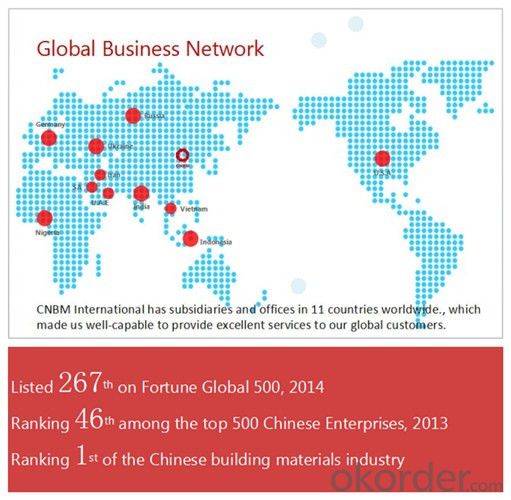
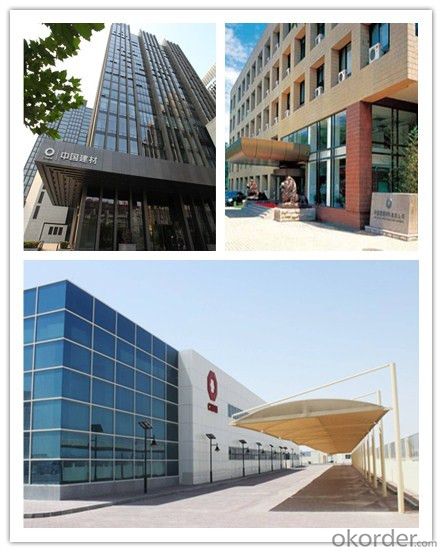
Packaging & Delivery of the ASTM A706, 460B,500B,GR40,GR50 Deformed Steel Bar
| Packaging Detail | Sea worthy packing /as per customer's packing instruction |
| Delivery Detail | 15 ~ 40 days after receiving the deposit |
FAQ
| Are you a trading company or manufacturer? | Manufacturer |
| What’s the MOQ? | 1000m2 |
| What’s your delivery time? | 15-20 days after downpayment received |
| Do you Accept OEM service? | Yes |
| what’s your delivery terms? | FOB/CFR/CIF |
| What's the Payment Terms? | 30% as deposit,70% before shipment by T/T |
| Western Union acceptable for small amount. | |
| L/C acceptable for large amount. | |
| Scrow ,Paybal,Alipay are also ok | |
| Why choose us? | Chose happens because of quality, then price, We can give you both. Additionally, we can also offer professional products inquiry, products knowledge train (for agents), smooth goods delivery, excellent customer solution proposals. |
| What's your available port of Shipment? | Main Port, China |
| What’s your featured services? | Our service formula: good quality+ good price+ good service=customer's trust |
| Where are your Market? | Covering more than 160 countries in the world |
- Q: Are there any environmental concerns related to steel rebars?
- Yes, there are some environmental concerns related to steel rebars. The production of steel rebars involves the extraction of iron ore, which can lead to habitat destruction and deforestation. The manufacturing process also requires a significant amount of energy, contributing to greenhouse gas emissions. Additionally, steel rebars are typically coated with epoxy or other materials that contain harmful chemicals, posing risks to both human health and the environment during their production and use. Proper disposal and recycling of steel rebars are also important to minimize their environmental impact.
- Q: What are the different types of steel rebars used in elevated highways?
- Steel rebars commonly used in elevated highways vary in type, each with its own strength and durability. These rebars serve to provide structural support and reinforcement to the concrete structures found on highways. 1. Mild Steel Rebars, also known as black steel rebars, are the most frequently utilized type on elevated highways. They are made from carbon steel and possess a relatively low tensile strength. These rebars are cost-effective and offer adequate reinforcement for most highway structures. 2. High-strength Steel Rebars are manufactured using high-strength low-alloy (HSLA) steels, which boast higher tensile strength compared to mild steel rebars. They are employed in highway areas requiring additional strength and load-bearing capacity. High-strength steel rebars prove particularly advantageous in bridges and elevated structures subjected to heavy traffic or seismic activity. 3. Epoxy-coated Rebars enhance corrosion resistance by applying an epoxy coating to the steel surface. These rebars are commonly used in regions with high moisture exposure, such as coastal highways or areas with high humidity. The epoxy coating acts as a barrier between the steel and the external environment, preventing corrosion and extending the rebars' lifespan. 4. Galvanized Rebars, similar to epoxy-coated rebars, are also corrosion-resistant. However, instead of epoxy coating, they are coated with a layer of zinc. Galvanized rebars excel in their resistance to corrosion caused by harsh chemicals or saline environments. They are commonly found in coastal areas or regions with high pollution levels. 5. Stainless Steel Rebars are made from a corrosion-resistant alloy containing chromium and nickel. These rebars offer excellent resistance to corrosion, making them ideal for highly corrosive environments such as highways near chemical plants or industrial areas. Though more expensive, stainless steel rebars provide long-term durability and require minimal maintenance. It is crucial to consider the specific requirements and environmental conditions of the elevated highway project when selecting the appropriate steel rebars. Consulting with structural engineers and adhering to local building codes and regulations is essential to ensure the safety and longevity of the highway structures.
- Q: Can steel rebars be used in structures with high resistance to vibration?
- Structures with high resistance to vibration can indeed make use of steel rebars. These rebars are frequently employed as reinforcements in concrete structures to enhance their durability and strength. The inclusion of steel rebars bolsters the structural integrity of buildings and infrastructure, rendering them more impervious to a range of forces, including vibrations. Steel rebars possess exceptional tensile strength and stiffness, enabling them to evenly distribute and absorb applied loads throughout the structure. This characteristic helps to minimize concentrated stress points that may trigger vibrations or structural failure. Moreover, steel rebars are effective in controlling crack widths and preventing crack propagation, which further fortifies the structure against vibrations. Furthermore, steel rebars can be tailored to meet specific requirements based on projected vibration levels. By utilizing rebars with suitable diameters, spacing, and anchorage details, structures can be engineered to withstand vibrations caused by various external factors, such as earthquakes, wind loads, or nearby machinery. It is of utmost importance to ensure proper design and detailing of steel rebars in structures with high resistance to vibration. The layout of reinforcements must be meticulously planned to account for anticipated forces and vibrations. Additionally, the rebars should be adequately anchored and connected to other structural components to maintain their efficacy in combatting vibrations. All in all, when designed and implemented correctly, steel rebars serve as a dependable and widely-used reinforcement material that significantly enhances the resistance of structures to vibrations.
- Q: What are the advantages of using deformed steel rebars?
- There are several advantages of using deformed steel rebars in construction. Firstly, the deformations on the surface of the rebars create a strong bond with the surrounding concrete, enhancing the overall structural integrity of the reinforced concrete. Secondly, the rough surface of the rebars provides increased resistance against slipping, preventing potential failures due to movement or seismic activities. Additionally, deformed rebars offer improved load-bearing capacity, enabling them to withstand higher loads and stresses compared to plain steel rebars. Lastly, the increased ductility of deformed rebars allows for better absorption of energy during earthquakes or other dynamic forces, making them a reliable choice for seismic zones.
- Q: Can steel rebars be used in lightweight concrete construction?
- Yes, steel rebars can be used in lightweight concrete construction. In fact, they are commonly used to reinforce lightweight concrete structures such as walls, beams, and columns. The addition of steel rebars provides tensile strength to the concrete, making it more resistant to cracking and structural failure. Lightweight concrete, which typically has a lower density than traditional concrete, can benefit from the use of steel rebars as they help to counteract the lower strength and reduce the risk of deformation under load. However, it is important to choose the appropriate size and spacing of rebars based on the specific requirements and design of the lightweight concrete structure.
- Q: Can steel rebars be used in water treatment facilities?
- Yes, steel rebars can be used in water treatment facilities. Steel rebars are commonly used in the construction of various structures, including water treatment facilities. They provide strength and durability to the concrete structures, ensuring their stability and longevity in the harsh environment of water treatment facilities.
- Q: Can steel rebars be used in underwater structures?
- Yes, steel rebars can be used in underwater structures. Steel rebars are commonly used in construction projects to reinforce concrete structures and provide additional strength and stability. When it comes to underwater structures, such as bridges, dams, and offshore platforms, the use of steel rebars is crucial due to their excellent strength and durability. However, the use of steel rebars in underwater structures requires additional considerations. One of the main concerns is corrosion, as exposure to water and salt can accelerate the corrosion process. To mitigate this issue, corrosion-resistant steel rebars, such as stainless steel or epoxy-coated rebars, are used. These rebars have protective layers that prevent direct contact between the steel and water, minimizing the risk of corrosion. Furthermore, proper design and construction techniques are essential when using steel rebars in underwater structures. Adequate concrete cover and proper spacing between rebars are crucial to ensure sufficient protection against corrosion and maintain the structural integrity of the underwater structure. Additionally, regular inspection and maintenance are necessary to identify and address any signs of corrosion or deterioration in the rebars. In conclusion, steel rebars can be used in underwater structures, but it requires careful consideration of corrosion protection measures and adherence to proper design and construction practices. With the right precautions in place, steel rebars can provide the necessary strength and durability for underwater structures.
- Q: How do steel rebars contribute to the durability of concrete?
- Steel rebars contribute to the durability of concrete by providing reinforcement and strength to the structure. When embedded in concrete, rebars help to counteract tensile forces, which are the forces that tend to pull apart the concrete. This prevents cracking and enhances the structural integrity of concrete, making it more resistant to various external factors such as heavy loads, seismic activity, and temperature changes. Additionally, rebars help to distribute stress evenly throughout the concrete, reducing the risk of localized damage and increasing the overall longevity of the structure.
- Q: How do steel rebars affect the workability of concrete?
- Concrete workability can be significantly impacted by the presence of steel rebars. Initially, steel rebars in concrete contribute to increased strength and structural integrity. They act as reinforcement by absorbing and redistributing tensile forces, preventing cracking or collapsing under load. However, the addition of steel rebars also has various effects on concrete workability. Firstly, it reduces the workability or slump of the concrete mix. Consequently, the concrete becomes less fluid and more challenging to handle, particularly during pouring and placement. The rebars create obstacles and impede the flow of concrete, demanding greater effort to properly place and compact the mixture. Moreover, steel rebars can lead to issues such as segregation and segregation of concrete. Segregation arises when the heavier rebars cause the aggregate to settle at the bottom, resulting in an uneven distribution of components in the mixture. This can negatively impact the concrete's strength and durability. Additionally, ensuring proper bond between the steel and concrete may require additional measures. Adequate cover depth and correct placement of rebars are crucial to fully embed the rebars in the concrete, providing the necessary reinforcement. Failing to achieve a proper bond can jeopardize the concrete's strength and structural integrity. In conclusion, steel rebars have both positive and negative effects on concrete workability. While they enhance the strength and durability of the concrete, they also reduce its workability and require additional considerations during the mixing and placement process. Effective planning and execution are necessary to incorporate the rebars efficiently without hindering the overall workability and performance of the concrete.
- Q: What are the guidelines for inspecting steel rebars on a construction site?
- The guidelines for inspecting steel rebars on a construction site typically include checking for proper placement, alignment, and spacing of the rebars according to the project specifications and design drawings. Inspectors also need to ensure that the rebars are free from any damages, rust, or contamination that could affect their structural integrity. Additionally, inspectors should verify the rebars' dimensions, lengths, and grades, as well as their proper anchorage and connection to adjacent elements. Regular inspections throughout the construction process are crucial to maintain quality and compliance with safety standards.
Send your message to us
ASTM A706, 460B,500B,GR40,GR50 Deformed Steel Bar
- Loading Port:
- Tianjin
- Payment Terms:
- TT OR LC
- Min Order Qty:
- 100 m.t.
- Supply Capability:
- 10000 m.t./month
OKorder Service Pledge
Quality Product, Order Online Tracking, Timely Delivery
OKorder Financial Service
Credit Rating, Credit Services, Credit Purchasing
Similar products
Hot products
Hot Searches
Related keywords
